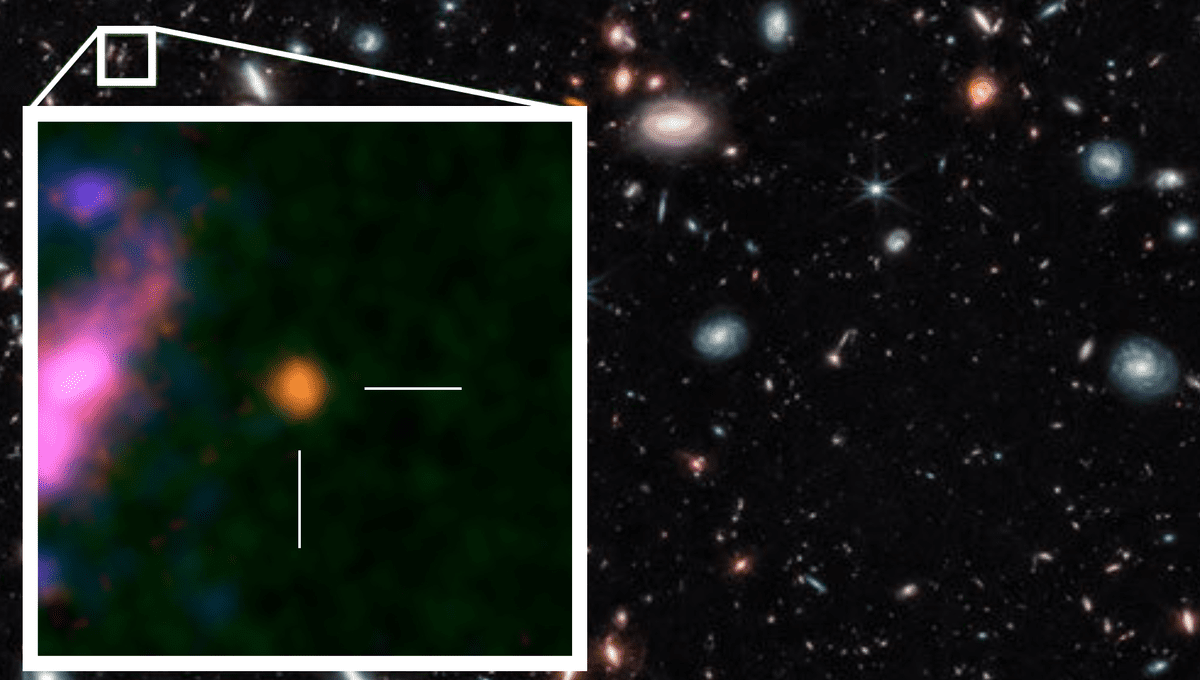
The keen eye of JWST has been able to find several extremely distant galaxies over the last six months. And now, astronomers can tell that in one of them, there is oxygen. This is the most distant detection of the precious chemical element ever recorded.
The galaxy is GHZ2/GLASS-z12, and the light detected by JWST came from just 367 million years after the Big Bang. The Atacama Large Millimeter/submillimeter Array (ALMA) was pointed toward this object and the researchers were able to detect an emission line consistent with the presence of oxygen at a very great distance. This is independent confirmation that the JWST measurement is indeed correct.
“It was a very exciting time to be an observational astronomer, and we could track the status of the observations that will test the JWST results in real time,” lead author Tom Bakx of Nagoya University said in a statement.
The presence of oxygen reveals a lot about these distant galaxies. The first-ever stars that shone in the universe were made of just hydrogen and helium. The nuclear processes at their centers led to the formation of many other elements, which dispersed as the stars aged and expanded, and (in some cases) eventually exploded.
Understanding these first stars in those first galaxies is crucial to completing the current picture of galaxy evolution. And thanks to JWST and ALMA, we are getting to know these primordial objects.
“The bright line emission indicates that this galaxy has quickly enriched its gas reservoirs with elements heavier than hydrogen and helium. This gives us some clues about the formation and evolution of the first generation of stars and their lifetime. The small separation we see between the oxygen gas and the stars’ emission might also suggest that these early galaxies suffered from violent explosions that blew the gas away from the galaxy centre into the region surrounding the galaxy and even beyond,” added co-lead author Jorge Zavala of the National Astronomical Observatory of Japan.
Independent confirmations are important. JWST can do some by itself, but having more eyes on a thing is always good. The quick way to measure how far is a galaxy is to look at its color. Due to the expansion of the universe, the light from very distant objects is stretched more and more toward the red end of the visible light region. But if a galaxy is nearby and very dusty, it might appear equally red, and cause confusion. So, astronomers look for the signature of chemical elements to provide confirmation of whether these objects are truly far away. And GHZ2/GLASS-z12 certainly is.
The research is published in the journal Monthly Notices of the Royal Astronomical Society.
Source Link: Oxygen Has Been Discovered In The Most Distant Galaxy Yet